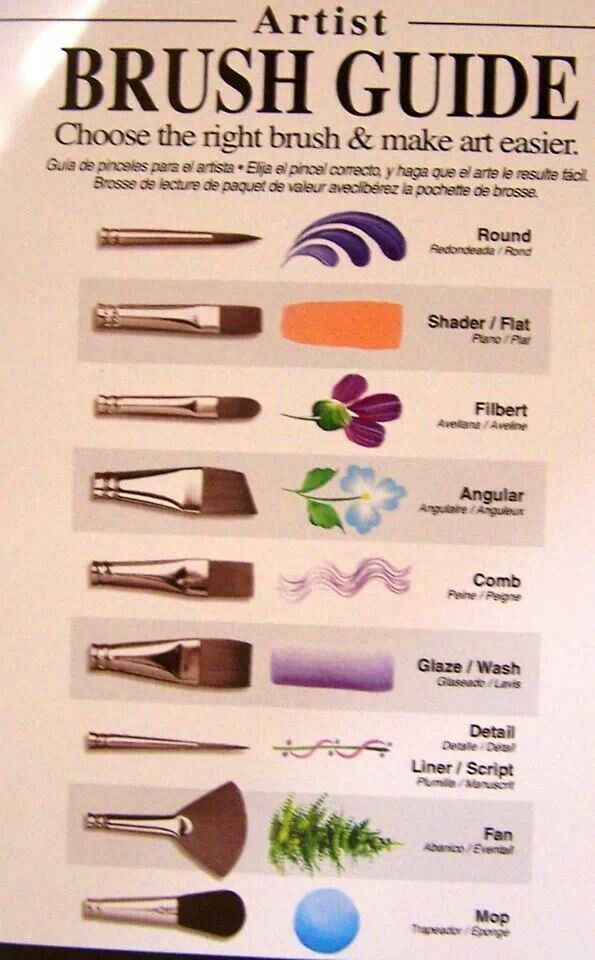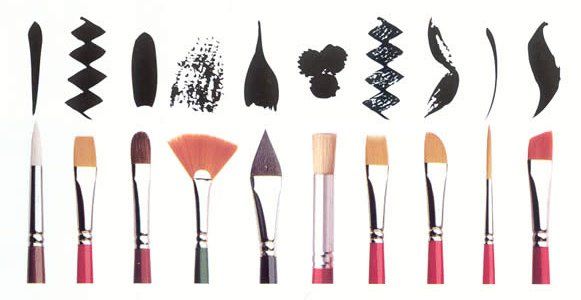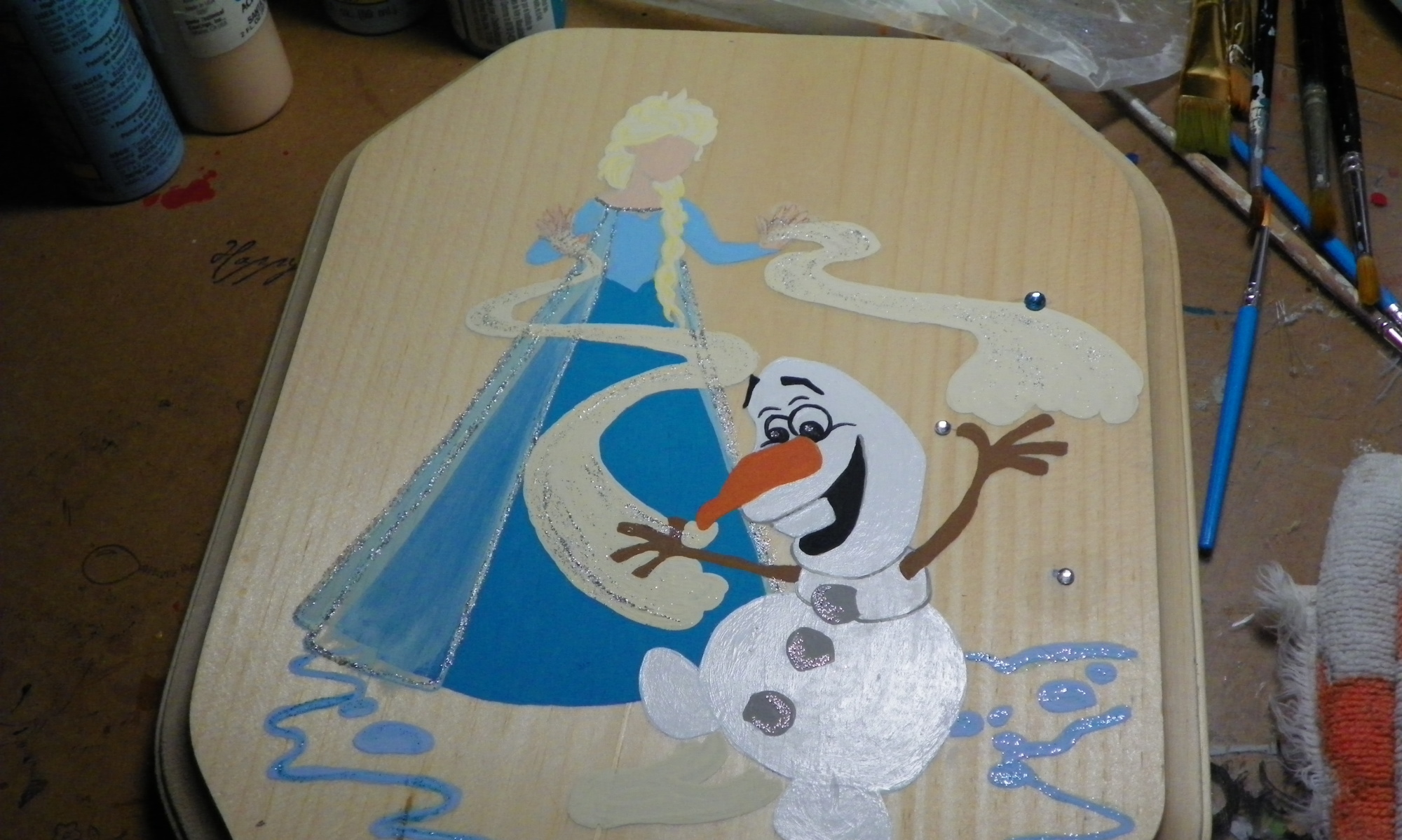So, I wanted to share with you some of the fantastic things I have found on the internet which have made my life so much easier giving me quick references and quick answers. They are printed out and on my crafting table in direct view. I love, love, love the Internet. 
Below is a visual showing the many sizes of brushes available. Some have just a few bristles to them making them seem worthless. They are really important when painting the eyes or lips on a small figurine or any other intricate space. The wide brushes are you need for cover backgrounds such as on name plaques. Note the higher numbers indicate the brush will be thicker. If there are a lot of zeroes, you can be sure that is a very tiny brush. 
Next we have a couple charts related to which brush is used to create which effect or stroke. I suggest sitting down with some paint and paper to try out each brush and stroke. Try different sizes of brushes with the same stroke. You will find Angela Anderson on YouTube to be really helpful with learning these strokes. Check her out because she has quite a bit up there for you to practice along. Grab a refreshing drink and sit down, relax and have a ball!

I just learned a second good use for a mop brush. Mop up excess water as you are painting which is really nice. I put an antiquing wash on a lot of my figurines. It is very very watery and will drip. A towel is quite cumbersome and can ruin the piece if you are not careful. This brush is a delight and just sucks up that excess water with no muss.

Just want to mention when working on large backgrounds say for a large welcome sign, you can use a small foam roller to the job very quickly with nice smooth coverage. Be creative as well. Toothpicks are great for making tiny polk-a-dots. Q-tips are good for fluffy effect like snow flakes. A natural sponge and give texture to an animal’s fur coat. I have also used the fan brush for texturing fur or hair. Although the brushes are extremely important, it’s now always about the brushes.
That is about it for today. I am going to go work on my terra cotta pot. After I got all the water seal on it and it was dry ready to paint, I inadvertently bumped into the shelf it was on. Yup…went flying and smashed. So have to start the process all over again now that I have a new pot. Wish me luck in not breaking something again. I seem really good at that lately.
“Adopt the pace of nature: her secret is patience.”
― Ralph Waldo Emerson
Take your time. There is no rush. Learn at your own speed. Just never stop creating!


